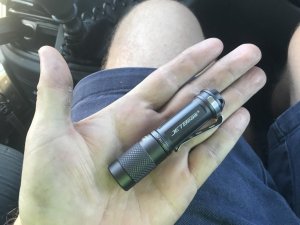Transistorized
Member (SA)
This charger will show bad if the cells voltage reads 0.8V or less. Sometimes you can kick start the battery back to 1.0V or higher by paralleling it to a good charged battery for a few seconds (+ to + and - to -).
It sounds like these "bad" cells dropped below 1.0V and the others were carrying them while in the wheely. This can happen. Also these batteries are new and have not yet conditioned themselves so it is not uncommon for them to be greatly unbalanced until after a few cycles.
Checking the voltage is a must after each use when using these in a radio with no volt meter..if possible.
It sounds like these "bad" cells dropped below 1.0V and the others were carrying them while in the wheely. This can happen. Also these batteries are new and have not yet conditioned themselves so it is not uncommon for them to be greatly unbalanced until after a few cycles.
Checking the voltage is a must after each use when using these in a radio with no volt meter..if possible.









